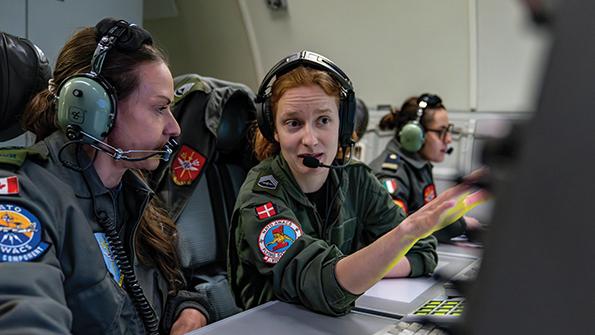
A Canadian crewmember, left, served on a NATO E-3A Sentry mission over Europe earlier this year, but Canada has never operated its own airborne early warning aircraft.
Credit: NATO
A recent bonanza for the Royal Canadian Air Force’s aircraft fleet bypassed Canada’s aerospace industry. Ottawa has signed orders for 104 new military aircraft over the past 18 months, but none from Bombardier, despite a furious challenge for a contract that went to Boeing. As the government begins...
Canadian Defense Industry Gets Early Warning On Next Big Contract is available to both Aviation Week & Space Technology and AWIN subscribers.
Subscribe now to read this content, plus receive critical analysis into emerging trends, technological advancements, operational best practices and continuous updates to policy, requirements and budgets.
Already a subscriber to AW&ST or AWIN? Log in with your existing email and password.





